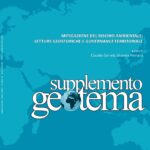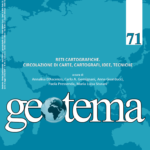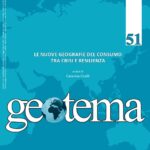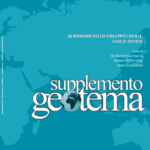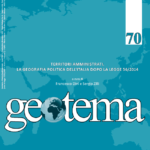Antonella Rinella, Francesca Rinella
Il Tavoliere della transumanza tra iconemi relitti e rizomi resilienti
Dall’11 dicembre 2019, la transumanza è entrata a far parte della Lista Rappresentativa del Patrimonio Culturale Immateriale dell’UNESCO: il successo della sua candidatura è il frutto del coinvolgimento di molteplici comunità locali che hanno attivamente lavorato alla valorizzazione e salvaguardia di tale pratica rurale, oramai in disuso e, soprattutto, del fondamentale apporto delle ultime famiglie armentizie che hanno saputo mantenerla in vita strappandola all’oblio. Il presente lavoro intende raccontare sia «quello che è stato», sia «quel che resta» (Teti, 2017) della transumanza nel paesaggio e nell’organizzazione economico-territoriale del Tavoliere, attraverso la descrizione/interpretazione di studiosi e viaggiatori che hanno esplorato la sub-regione in diverse epoche storiche, la ricerca sul campo e l’illustrazione del caso esemplare dell’azienda agricola Fratelli Carrino (Lucera), che ha custodito l’eredità culturale familiare transumante, trasformandola in risorsa strategica, volano di una forma di patrimonializzazione ancorata all’etica della «restanza» (Teti, 2014) e alla sostenibilità.
Abstract: The Tavoliere of Transhumance between Wreked Iconemas and Resilient Rhizomes
Since 11th December 2019, transhumance has become part of the UNESCO Intangible Cultural Heritage Representative List: the success of its candidacy is the result of the involvement of multiple local communities that have actively worked on the enhancement and safeguarding of this rural practice now in disuse and, above all, of the fundamental contribution of the last herding families who have been able to keep it alive by tearing it from oblivion. This work aims to tell both «what has been» and «what remains» (Teti, 2017) of transhumance in the landscape and in the economic-territorial organization of the Tavoliere, through the description/interpretation of scholars and travelers who have explored the sub-region in different historical periods, the field research and the illustration of the exemplary case of the Fratelli Carrino farm (Lucera), which preserved the transhumant family cultural heritage by transforming it into a strategic resource, the flywheel of a form of capitalization anchored to the ethics of the so called «restanza» (Teti, 2014) and to sustainability.
Résumé: Le Tavoliere de la transhumance entre iconemi rares et rhizomes resistant
Depuis le 11 septembre 2019, la transhumance a été inscrite sur la Liste représentative du patrimoine culturel immatériel de l’humanité de l’UNESCO : le succès de cette candidature est le résultat de la participation de nombreuses communautés locales qui ont travaillé activement à la valorisation et la sauvegarde d’une telle pratique désormais à l’abandon et, surtout, de l’apport fondamental des dernières familles de bergers qui ont su la maintenir en vie en la sauvant des oubliettes. Ce présent ouvrage a l’intention de raconter « ce qui a été » comme « ce qui reste » (Teti, 2017) de la transhumance dans le paysage et dans l’organisation économico-territoriale du Tavoliere à travers la description/interprétation de savants et voyageurs qui ont exploré la sous-région à différentes époques historiques, la recherche sur le terrain et l’illustration du cas exemplaire de l’exploitation agricole Fratelli Carrino (Lucera) qui a conservé l’hérédité culturelle familiale de la transhumance en la transformant en une véritable ressource stratégique, moteur d’une forme de patrimonialisation encore ancrée à l’éthique de la soi-disant « restanza » (Teti, 2014) et à la durabilité.
Parole chiave: transumanza, bene culturale, restanza, Tavoliere
Keywords: transhumance, cultural heritage, restanza, Tavoliere
Mots-clés : transhumance, bien culturel, restitude, Tavoliere


